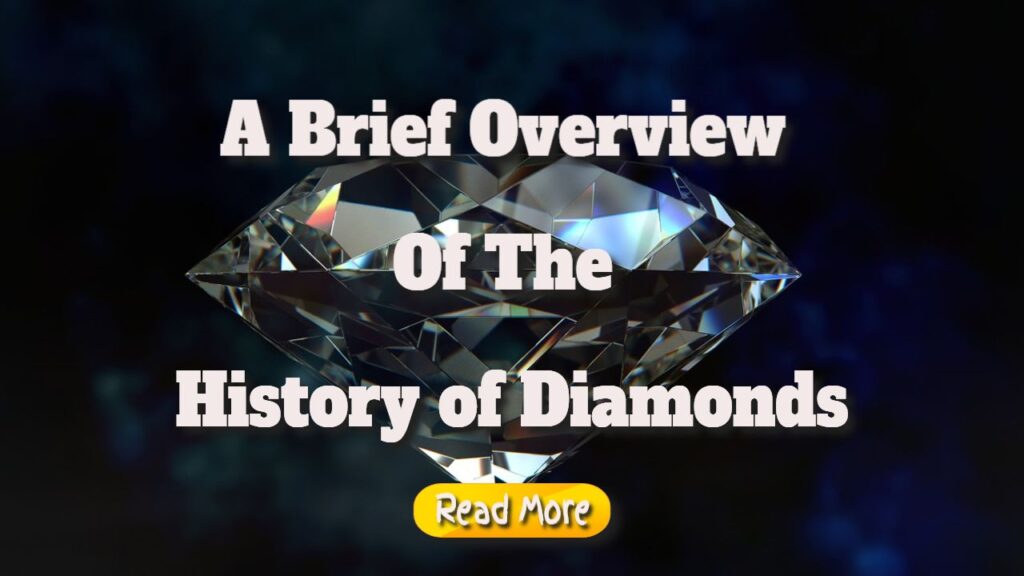Discover the Fascinating Journey Through Diamond History
Diamonds represent not only exquisite beauty but also immense value, making them some of the most sought-after pieces of jewelry worldwide. Their allure is matched only by their mysterious origins and the stories they carry through time. These remarkable gemstones have captivated admirers for centuries, and their journey from the earth to adorn jewelry showcases their significance. Each diamond we encounter in jewelry stores and museums is a relic of the past, having existed for millions of years and witnessed the passage of time, all while enchanting those who gaze upon their brilliance.
The diamond is often seen as a powerful symbol of love and commitment, representing a promise of an everlasting bond between two people. This precious stone signifies the end of one phase of a relationship and the hopeful beginning of a united future. As a passionate member of the diamond industry, I am deeply intrigued by the historical narratives that shape these gems and their vital role in human society.
Uncovering the Stories Behind Each Diamond
The term “diamond” comes from the Greek word “Adamas,” which translates to “invincible” or “unbreakable.” This origin reflects the strength and durability of these precious stones. Long before diamonds became a modern-day symbol of love, they were shrouded in superstition and imbued with spiritual significance. Ancient cultures viewed diamonds as powerful entities, believed to possess divine attributes and energies. Plato even suggested that diamonds were living beings, while Hindu texts spoke of their protective qualities against various dangers, including fire, poison, and malevolent spirits.
The Romans, too, held diamonds in high esteem, believing that they granted strength and invincibility to warriors in battle. In various cultures, it was thought that these stones could heal the sick, showcasing their multifaceted appeal and the reverence they garnered throughout history.
Tracing the Ancient Origins of Diamonds
Many historians trace the origins of diamonds back to ancient India, where they were first discovered by the Dravidian people between 2500 and 1700 BC during the Bronze Age Indus Valley Civilization. Some scholars suggest that diamonds may have been known even earlier, around 1000 BC. The first comprehensive records detailing diamonds appear in ancient Sanskrit texts, such as the Arthashastra and Ratnapariksha, dating back to between 400 and 300 BC. These writings not only document the use of diamonds as a form of currency but also provide early methods for assessing their quality.
Both texts highlight the mystical qualities attributed to diamonds, suggesting that wearing one could protect the individual from harm. The diamond was referred to as “the jewel above all others,” signifying its esteemed status as the most coveted and valuable item in Indian culture. Additionally, the Bible contains early references to diamonds, illustrating their historical significance and varied uses.
When Alexander the Great invaded India in 327 B.C., he returned to Europe with diamonds, marking a pivotal moment in the history of diamond trade and export. In 120 BC, a Greek explorer named Eudoxus Cysicii documented the first mention of diamond mining in Europe, highlighting the growing importance of these gemstones across cultures.
The Evolution of Diamonds as Symbols of Wealth and Love
For centuries, diamonds have served dual purposes as both currency and symbols of prestige. It wasn’t until 1074 that diamonds began to be commonly worn as jewelry, when the Queen of Hungary adorned her crown with these sparkling gems. The following millennium saw a surge in the cultural significance of diamonds, as royal families and influential leaders exchanged them to forge alliances and showcase their commitment to one another.
The diamond industry flourished, with new mines discovered across the globe, solidifying diamonds as emblems of love and loyalty. 
In the early 13th century, the legendary Koh-i-Noor diamond was unearthed in the Golconda mines of India. Weighing over 790 carats, it was imbued with supernatural qualities, leading many to believe that its possessor would dominate the world. This precious stone has changed ownership numerous times throughout history, often amidst conflict, leading to its reputation as a cursed gem. Today, it is a prominent part of the United Kingdom’s Crown Jewels, elegantly set in the Queen Mother’s crown and securely housed in the Tower of London.
The tradition of using diamonds in engagement rings began in 1477 when Archduke Maximillian of Austria proposed to Mary of Burgundy with the first diamond engagement ring. This act set the stage for the enduring practice of using diamonds to signify love and commitment. As demand for diamonds grew, so did their supply; Vasco da Gama opened direct sea routes to India in the early 1500s, leading to an influx of diamonds into Europe.
One notable transaction involved the sale of the 116-carat “Tavernier Blue” diamond to Louis XIV of France, in exchange for substantial wealth and a title of nobility. Since 1958, this magnificent diamond has been a featured exhibit at the National Museum of Natural History in Washington, D.C. As diamonds gained popularity, various cuts emerged, including the “rose cut” in 1520 and a heart-shaped diamond ring gifted by Mary Queen of Scots to Queen Elizabeth in 1562, which symbolized friendship.
French gem dealer Jean-Baptiste Tavernier discovered the iconic Hope diamond in the Golconda mines during his explorations in 1638. As the diamond industry continues to evolve, I eagerly anticipate the future, imagining the new discoveries and the stories yet to unfold. Despite the ever-changing landscape of global economics and cultural shifts, the significance and allure of diamonds remain steadfast.
Wearing a diamond transcends mere aesthetics; it is akin to donning a piece of history, a tangible connection to the past. As we navigate through economic fluctuations and changing values, the beauty, resilience, and timelessness of diamonds remind us of their unmatched significance in human civilization.
The post A Brief Overview Of The History of Diamonds appeared first on https://gqcentral.co.uk


Comments are closed